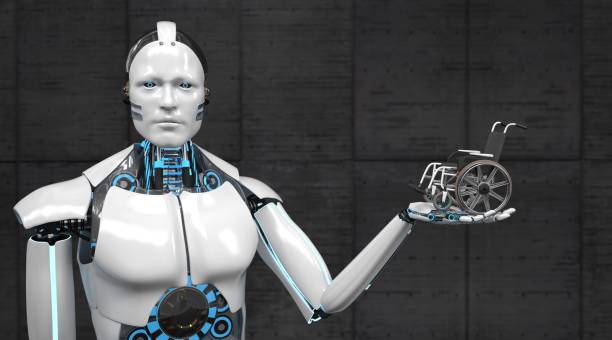Introduction
Humanoid robots, once confined to science fiction, are now becoming a reality thanks to advancements in artificial intelligence (AI). These robots, designed to mimic human appearance, behavior, and intelligence, are making their way into various industries, from customer service to healthcare. As AI continues to evolve, humanoid robots are becoming more sophisticated, capable of understanding emotions, engaging in conversations, and even performing complex tasks. But what is driving this rise, and what does the future hold?
The Evolution of Humanoid Robots
Humanoid robots have come a long way from simple mechanical machines to highly intelligent entities. Early robots were primarily used in industrial settings, performing repetitive tasks. However, with AI integration, robots are now equipped with machine learning, natural language processing (NLP), and computer vision, allowing them to interact more naturally with humans.
Some of the most famous humanoid robots include:
- Sophia (by Hanson Robotics) – An AI-powered robot capable of holding conversations, recognizing faces, and expressing emotions.
- ASIMO (by Honda) – A highly advanced robot designed for mobility and human-like movement.
- Ameca (by Engineered Arts) – A humanoid robot with realistic facial expressions and conversational abilities.
How AI is Making Robots More Human-like
The key to making humanoid robots more lifelike lies in AI-powered technologies. Here’s how AI is enhancing their capabilities:
1. Natural Language Processing (NLP) for Conversations
AI-driven NLP enables robots to understand and respond to human speech in real time. Virtual assistants like Alexa and Siri have laid the groundwork for conversational AI, and humanoid robots take this a step further by engaging in face-to-face interactions.
2. Facial Recognition and Emotion Detection
Using AI-powered computer vision, humanoid robots can recognize human faces and interpret emotions based on facial expressions. This capability allows them to respond appropriately, making interactions more natural and engaging.
3. Advanced Mobility and Dexterity
AI enables humanoid robots to move with greater agility and coordination. Companies like Boston Dynamics have developed robots capable of walking, running, and even performing acrobatic movements. AI-powered motion control ensures that these robots can navigate complex environments with ease.
4. Learning and Adaptation
Machine learning allows humanoid robots to improve over time by learning from their interactions and experiences. This means they can adapt to different tasks, making them more useful in various industries.
Applications of Humanoid Robots
Humanoid robots are making an impact across multiple sectors:
1. Healthcare and Elderly Care
Robots like Grace (by Hanson Robotics) assist in hospitals, providing companionship to elderly patients and helping medical staff with routine tasks. AI-powered humanoid robots can also remind patients to take medications and monitor their health.
2. Customer Service and Retail
Humanoid robots are being used in malls, hotels, and banks to greet customers, provide information, and assist with transactions. Pepper (by SoftBank Robotics) is a popular example of a customer service robot that interacts with people in retail stores and offices.
3. Education and Training
AI-driven humanoid robots serve as teaching assistants in schools, helping students learn languages, coding, and STEM subjects. They can provide personalized learning experiences and adapt to individual student needs.
4. Entertainment and Hospitality
Robots are also making their way into entertainment, performing at theme parks, concerts, and even acting in movies. Some hotels have begun using humanoid robots as receptionists and concierge assistants.
Challenges and Ethical Considerations
While the rise of humanoid robots presents exciting possibilities, there are several challenges and concerns to address:
- Job Displacement: As robots become more capable, concerns about automation replacing human jobs continue to grow.
- Ethical AI Use: Ensuring that humanoid robots are programmed with ethical guidelines to prevent misuse is crucial.
- Privacy Concerns: AI robots that collect and process personal data raise concerns about security and privacy.
The Future of Humanoid Robots
The future of humanoid robots is filled with potential. As AI continues to advance, these robots will become even more intelligent, capable, and integrated into society. Future humanoid robots may develop enhanced emotional intelligence, better decision-making abilities, and even creative skills.
While we are still far from robots being indistinguishable from humans, their growing presence in everyday life suggests that we are entering a new era of human-robot interaction. With responsible AI development, humanoid robots can complement human efforts, improving efficiency and enhancing quality of life.
Conclusion
The rise of humanoid robots marks a significant milestone in AI and robotics. As these intelligent machines become more human-like, they are revolutionizing industries and redefining human-machine interactions. While challenges exist, the potential benefits of humanoid robots in healthcare, education, and customer service make them a promising technology for the future. The question now is not if humanoid robots will become a part of our world, but how we will integrate them in a way that benefits society as a whole.

